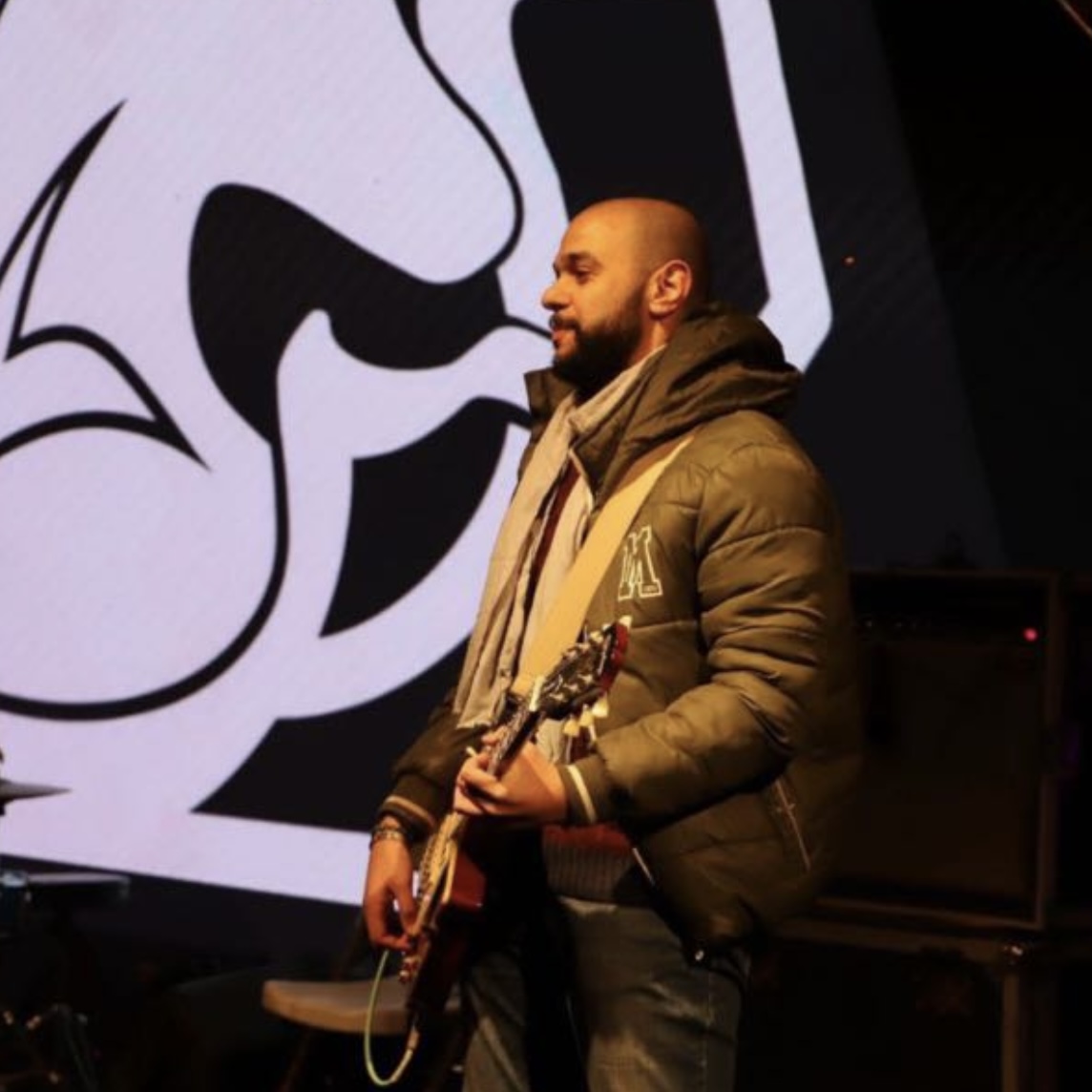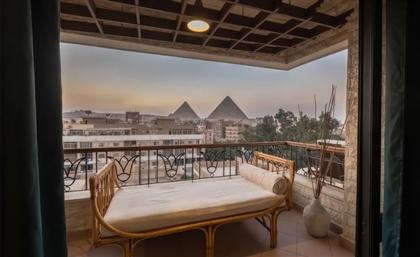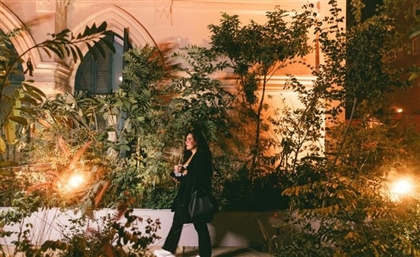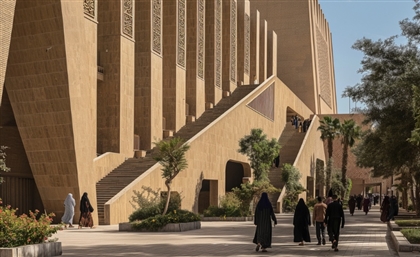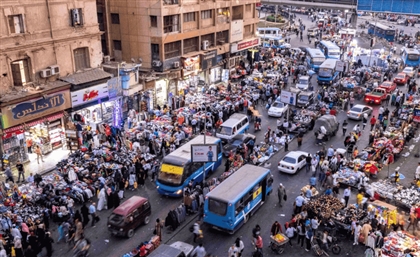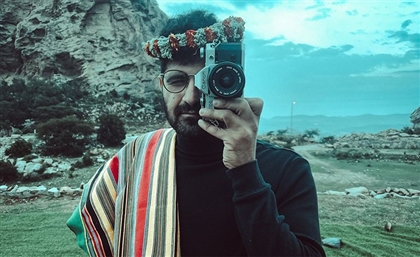Aly Eissa revisits 70s Cabaret music in latest album ‘Gouda Bar’
Aly Eissa brings four sprawling Shaabi pieces, inspired by 70s cabaret music, and a whole lot more.
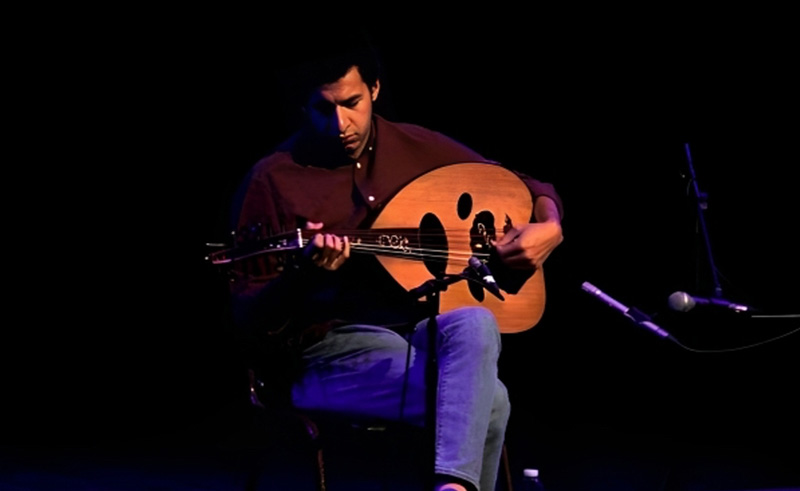
Cairo-based Aly Eissa is no stranger to nuanced compositions that effortlessly blend genres into sounds that are borderline indescribable at times. He’s been making music under his name since 2018, often featuring an eclectic mix of instruments in his composition. Aly’s group driven arrangements are always bustling, and his return with Gouda Bar, a studio album, is a continuation of all his trends.
Driven by a singular vision from Aly, Gouda Bar is a 4-part release that contains not one spoken or sung word. Nonetheless, Gouda Bar manages to communicate its ideas in less conventional ways that are consistently delivered elegantly and professionally by his 8-player ensemble. Recorded live in Zamalek’s All Saints Cathedral, Gouda Bar’s sublime sonic quality is in no small part thanks to efforts from a team of studio engineers, lead by Mohamed Sabry, with outstanding results.
The first of the album’s ideas is delivered via the artwork by Aly Gaafar. Inspired by a timeless episode of Tom & Jerry, Rock and Rodent, and a Monty Python sketch, the scene displays a clan of ready-to-party humanoids, clad in rat-head masks lining up in front of Gouda Bar, and the giant building is made of cheese. The scene is detailed with all sorts of activities happening and Gaafar’s dynamics, art style, and color are striking and a little unsettling.
The first track, ‘Barrel Dance’ was named after a vision that Aly had of people in barrels, dancing, and that scene is displayed on the album’s cover art, on the back. The piece itself introduces us to Aly Eissa’s compositional style, often taking all the time needed to fully develop ideas, with time given to the build ups and fade outs, and attention given to the climaxes, which directly causes the songs’ massive lengths. The shortest, ‘Virgin’, is 10 minutes long, and the title piece runs at a whopping 22 minutes.
The aforementioned opening track hosts an eclectic mix of instruments to deliver the album’s main sonic identity, namely Cabaret music from the 70s and 80s. The sound is primarily courtesy of a vintage Farfisa organ played by Sohieb Elnaggar and a wonderful percussion section led by Ayman Mabrouk. The results sound authentic. 70s cabaret music delivered with bell-bottomed pants and wallpapers in shades of burnt orange, both refreshing and masterful.
Camel, the 3rd piece sounds most like an intro for a centerpiece in a Sabah or Warda concert sometime in the 80s. Starting with a patient solo on the oud by Aly, delicious themes get introduced on the synths, played by the Norway-based Jonas Cambien. Another gorgeous piece of mixing ensures that the sound is wholly authentic. The 80s disco balls live and breathe through the melodies and atmospheres of ‘Camel’.
‘Virgin’ has one of the album’s most memorable starting chapters. After the endlessly bustling outro of ‘Barrel Dance’, the church organ-based intro to ‘Virgin’, accompanied by a sensual trumpet solo by Mohamed Sawwah is a moment of tranquility that’s unlike anything else on the record. A piece that explores an altogether different era, ‘Virgin’ has a sound that’s influenced by the rich 30s and 40s. Oud heavy, the piece is laid back and would be a belly dancer’s dream. The vintage aesthetics are contrasted by Cambien’s soaring synths in one of the album’s most entertaining passages, featuring some of the most outstanding instrumental fusions. An easy favorite.
Aly Eissa told us that an estimated 80% of music on this album is composed, with only 20% being improvised, with that improvised fifth also falling under Eissa’s unerring guidelines as to what vibes and intentions to be had by the players during their improv sections, while securing their musical expressive freedom. Those numbers become even more significant when we take the album’s title track into consideration. This 22-minute-long mammoth of a composition is built on a number of smaller sections and motifs that are fully discovered in Eissa’s usual fashion, with almost all of the sections some kind of improvised part. Adding that to the album’s live, one-take recording style and we end up with a work of musicianship that’s of immense value.
There’s so much to admire about Aly Eissa’s output, and so much to discover. A man with an Oud, and a group of talented musicians, and a rich vision of where everything should go and how everything should sound like. Not bad for a dentist who moonlights as a musician; quite good in fact.
- Previous Article Italian-Palestinian Duo No Input Debuts Eponymous Electro EP
- Next Article Egyptian Embassies Around the World
Trending This Week
-
Dec 23, 2025







